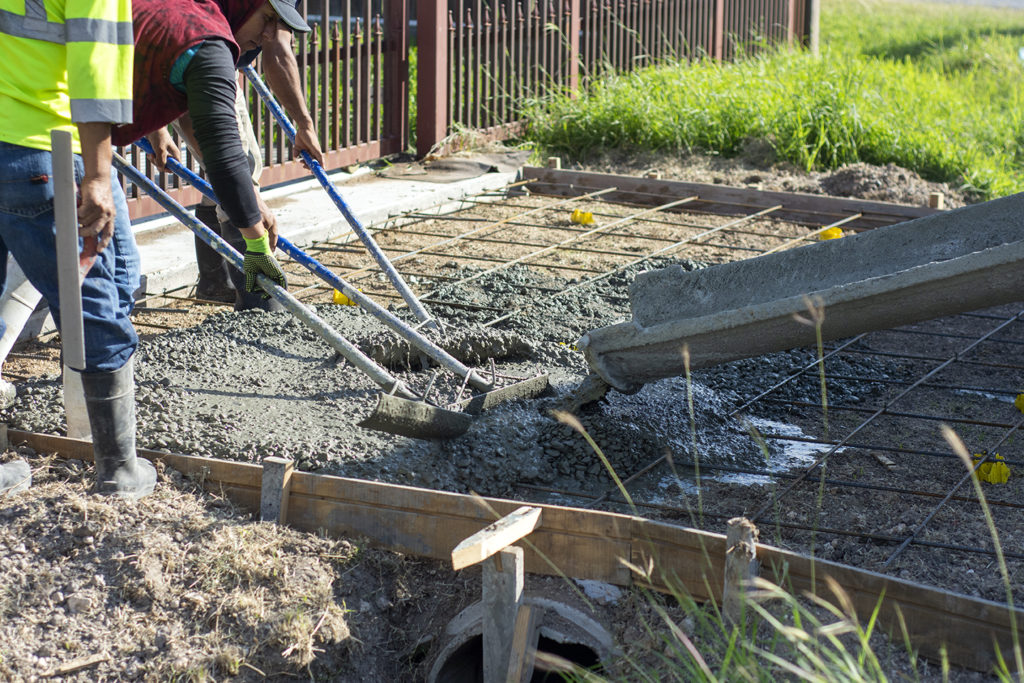Choosing Between Ready-Mix And On-Site Concrete
Choosing the right concrete for your job is key to sustainability and performance. But what is the right concrete for your job?
In this article we will discuss ready-mix and on-site concrete and their differences.
If you want to learn more about the right concrete for your job check out our website to see what we can do for you.
What Is Ready-Mix Concrete?
Ready-mixed concrete is batched for delivery from a central plant instead of being mixed on-site. Each batch is made to the specifics of the job and delivered usually in a traditional barrel mixer. There are two kinds of ready-mix concrete; transit-mixed/truck-mixed and shrink-mixed concrete.
Transit-mixed or truck-mixed concrete is batched at a batch plant then mixed in the truck during transit. The concrete may be partially mixed in transit and then completed at the jobsite. Shrink-mixed concrete that is partially mixed at the batch plant to shrink the volume of the mixture. Mixing is then completed in transit or at the jobsite. Ready-mixed concrete is often remixed once it arrives at the jobsite to ensure the quality of the concrete.
What Is On-Site Concrete?
On-site concrete brings all the materials to the jobsite for the mix. The materials are transferred in separated compartments within a mobile mixing truck. Whenever the jobsite is ready for the pour, the mobile mixing truck technology mechanically meters and measures the materials by volume. The materials precisely match the quality, quantity and any add-ins needed for the job. On-site concrete mix designs are set at the job site eliminating waste. The materials are mixed through the truck before pouring, producing the perfect concrete every time.
What Are The Differences Between Ready-Mix And On-Site Concrete?
Both ready-mix and on-site concrete can be made to the specifics of a job. However, there are two major key factors that set them apart; time and money.
Money
Ready-mix concrete has minimum requirements for order which can lead to over ordering for the job. This means you are required to pay for the entire truck load regardless of the amount you actually use. On-site concrete does not require minimums, you only pay for the amount that you need for the job.
Hot loads are a disadvantage to ready-mix concrete. They are created when the concrete starts to set on the way from the batch plant to the job site. If the barrel mixer is stuck in traffic on the way to the site it may cause quality issues with the concrete, therefore costing more money to fix. With on-site concrete, mobile mixing trucks do not have to mix the concrete until it is ready to be poured at the job site. This eliminates the chances of hot loads.
Time
Capacity issues in ready-mix concrete mixers means multiple trips back to the batch plant for materials. Mobile mixing trucks that produce on-site concrete carry all materials within the truck allowing you to go from job site to job site without needing to go back to the batch plant.
Ready-mix concrete is batched at a plant before it goes out to a job site. If the mix design is not correct or needs to be changed when it arrives at the job site the mixer will have to go back to the plant for a new batch. On-site concrete is made at the job site to the specific needs of the job. Through the mobile mixer truck’s technology, the mix designs can be changed at any time.
Knowing which concrete is best for your job site will save you time and money in the long run. While ready-mix concrete is not suitable for small jobs it may be a benefit to larger jobs. On-site concrete provides the exact needs for all jobs each time.
Still have questions on which concrete is best for your job site? Contact us or check out our resources page on our website.


